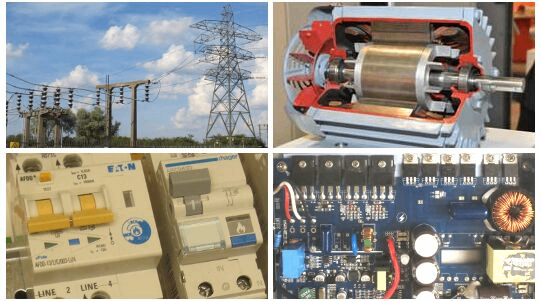The course includes the following subjects:
- Components and design in networks and buildings. Typical topology and dimensioning.
- Short-circuit currents. Calculation with short-circuit power and percentage impedance. Balanced and unbalanced faults in three-phase systems. Transient components in fault currents in inductive circuits and from rotating machines.
- Protection: consequences and protection principles regarding short-circuit and earth-fault currents and touch voltage.
- Power electronics with a focus on inverters for and mains connection of sources and for motor control.
- Sources: distributed generation, energy storage, backup power.
- Drive systems with motor and power electronics, focused mainly on the asynchronous motor.
- Power quality and electromagnetic environment: problems, cause, consequences, mitigation methods. The problems include voltage fluctuations, harmonics, and other disrupting frequencies and transients such as from lightning. The methods handle reduction of cause, increased hardiness, and shielding and overvoltage protection. The focus is mainly on low voltage installations.
- Rail traction vehicles and power supply systems for railways. Current design with a focus on systems in Sweden. Ongoing and future changes.
- Electrical vehicles apart other than rail: electric cars, trucks, etc Typical parameters, charging systems, handling of charging infrastructure in the power grids.
- illumination: light sources, principles of illumination in various contexts.
- Overview of laws, regulations, standard and practice in electrical safety, electromagnetic compatibility and contracts.
